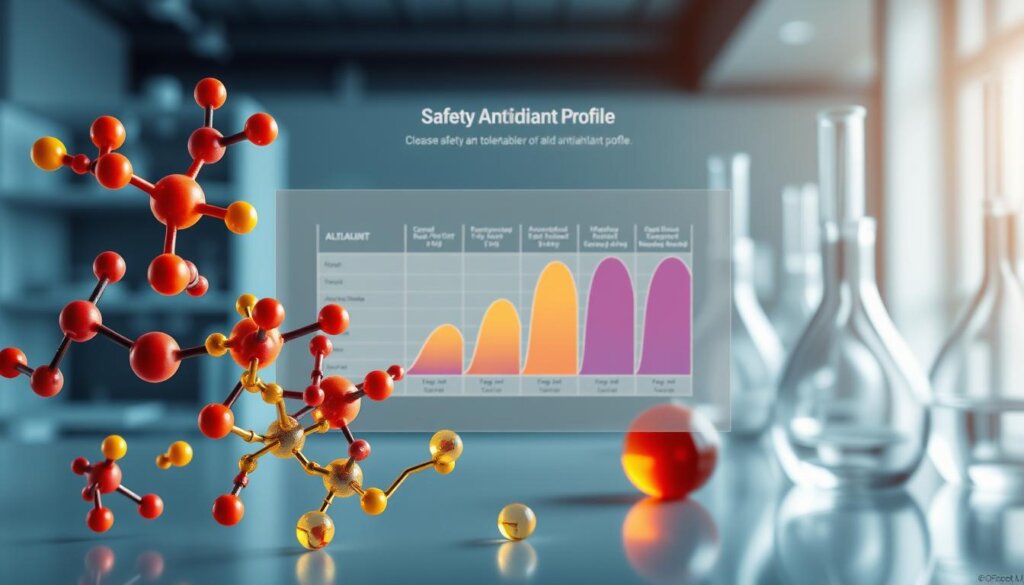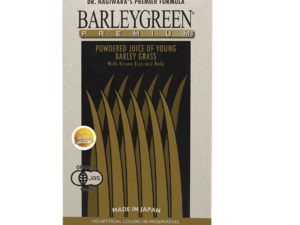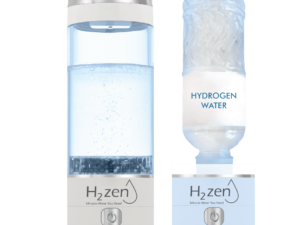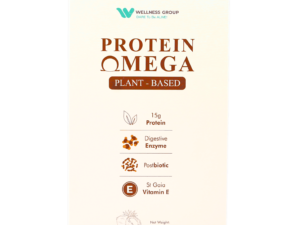Surprising fact: in some mouse studies, daily intake of low‑ppm molecular hydrogen preserved retinal layers and rod responses, a result that surprised many researchers.
This article outlines what labs observe and what that might mean for everyday life in Malaysia. It explains how a selective antioxidant can reach mitochondria and protect cells without blocking vital signals.
The text reviews delivery methods — drinking, inhalation, drops — and notes where studies tracked visual structure, inflammation, and oxidative stress. It keeps expectations realistic: most evidence comes from animal models, though early safety data exist in related human work.
Wellness Group offers guidance on eye wellness and hydrogen options in Malaysia. Reach out on WhatsApp: +60123822655 during business hours: Mon–Fri 9:30 am–6:30 pm; Sat–Sun 10 am–5 pm.
Key Takeaways
- Preclinical studies show protective effects on retinal structure and function in animal models.
- The agent acts as a selective antioxidant, targeting harmful ROS while sparing signaling molecules.
- Delivery options vary: drinking, inhalation, topical drops, and injected saline have all been tested.
- Most data come from mice; human evidence is limited and focused on safety so far.
- Malaysian readers can consult Wellness Group via WhatsApp for personalized advice.
Understanding user intent: what people really mean by “Is hydrogen water good for your eyes?”
Readers seek a clear, evidence‑based summary that separates lab results from useful consumer guidance. They want to know potential benefits, measurable effects, and whether any treatment pathways exist that make sense in daily life.
Most queries aim to compare peer‑reviewed article findings with what is safe and available in Malaysia. Animal models and reviews report selective ROS scavenging and anti‑inflammatory responses, but dosing and routes differ widely between lab settings and consumer products.
Informational search: evidence, safety, and practical next steps
Key expectations:
- Clear separation of animal study results and human data.
- Practical guidance on accessible delivery methods and quality signals.
- Safety context and how this may interact with standard treatment.
“Reliable sources such as google scholar help readers trace original studies and reviews to judge evidence strength.”
| What readers want | How to act | Where to read |
|---|---|---|
| Benefit vs. lab effects | Discuss with an eye specialist | google scholar |
| Safety and tolerance | Check concentration labels and seals | article reviews |
| Product quality | Look for third‑party testing | google scholar |
For tailored advice in Malaysia, contact Wellness Group on WhatsApp: +60123822655 (Mon–Fri 9:30 am–6:30 pm; Sat–Sun 10 am–5 pm). They can help review risks, group options, and next steps after reading an article or a study.
The quick answer at a glance: Is hydrogen water good for your eyes?
Short summary: Animal research shows targeted antioxidant therapy can protect retinal structure and function in models where oxidative stress drives damage.
In rd6 mice, low‑ppm molecular hydrogen in drinking water (about 1.2–1.6 ppm) preserved outer retinal thickness and improved rod ERG responses. Gene shifts linked to phototransduction were also reported, suggesting a cellular effect on photoreceptor health.
In a neonatal OIR model, inhaled gas (3–4%) helped revascularization and reduced pathological neovascularization. Most evidence remains preclinical, but safety signals are favorable and selectivity against cytotoxic radicals is a clear advantage.
- Early research: benefits seen in animal disease models driven by oxidative stress.
- Mechanisms: thicker outer retina, better rod ERG, gene changes that support phototransduction.
- Practical note: delivery and dose matter — dissolved gas versus inhalation yield different tissue exposure.
Check primary sources on Google Scholar to compare claims and study details.
For Malaysia-specific advice and product checks, contact Wellness Group on WhatsApp: +60123822655 (Mon–Fri 9:30 am–6:30 pm; Sat–Sun 10 am–5 pm).
Hydrogen and the eye: how molecular hydrogen interacts with reactive oxygen species
Cells in the retina balance signaling and damage every day. When oxidative stress rises, long‑term function is at risk. Molecular hydrogen offers a selective route to calm damaging radicals without blocking normal communication.
Oxidative stress, reactive oxygen species, and ocular tissues
The eye uses certain reactive oxygen species for signaling, but excess leads to protein and DNA harm. Mitochondria are a key source of stress in photoreceptors and ganglion cells.
Hydrogen acts selectively: targeting hydroxyl radicals and peroxynitrite
Molecular hydrogen neutralizes ·OH and ONOO− while sparing superoxide and hydrogen peroxide that aid signaling. This selectivity reduces pro‑inflammatory proteins such as CCL2, IL‑1β, IL‑6, and TNF‑α and lowers apoptosis in ocular cells.
Diffusion advantages: reaching mitochondria, nuclear DNA, and retinal layers
Small size lets hydrogen diffuse into mitochondria and even nuclear DNA. That distribution explains why animal model studies in mice show strong neuronal protection versus edaravone in ischemia models.
“Selective neutralization of the most toxic radicals may preserve signaling while reducing injury.”
| Feature | What it targets | Implication for the eye |
|---|---|---|
| Selectivity | Hydroxyl radicals, peroxynitrite | Protects cells while keeping signaling intact |
| Diffusion | Mitochondria, nuclear DNA, retinal layers | Reaches deep tissues relevant to degeneration |
| Inflammation | CCL2, IL‑1β, IL‑6, TNF‑α reduced | Lower protein and gene markers of stress |
What the research says today: overview of peer‑reviewed evidence
Recent peer‑reviewed work summarizes animal and early human trials that compare gas, dissolved, and saline delivery across retinal models.
From gas to saline to dissolved delivery
Researchers test inhalation (3–4% gas), dissolved solutions (up to ~0.8 mM at room temperature), and hydrogen‑rich saline given orally, intraperitoneally, intravenously, topically, or intravitreally. Administration and tissue distribution influence exposure time and effects in each model.
Key outcomes tracked in studies
- Electrophysiology: preserved ERG amplitudes and better rod response in rd6 and other mouse groups.
- Structure: thicker outer retina and improved barrier integrity in degeneration and diabetic models.
- Vascular markers: lower VEGF expression, less neovascularization in OIR models with gas exposure.
- Cell injury: reduced apoptosis and lipid peroxidation (malondialdehyde) in saline and dissolved formats.
“Google Scholar is a practical way to locate original articles and method details.”
These results come mainly from mice and rat work. They justify careful clinical trial design to test translation and safety in Malaysia and beyond.
Retinal degeneration and retinitis pigmentosa: can hydrogen protect photoreceptors?
Preclinical models of inherited retinal loss show that targeted antioxidant intake can slow photoreceptor thinning over months.
Mouse data in genetic models report that rd6 mice given low‑ppm hydrogen water (about 1.2–1.6 ppm) kept thicker outer retinal layers from 21 to 47 weeks.
Repeated OCT scans confirmed this structural benefit. ERG testing matched those results: rod b‑waves were preserved at multiple time points, indicating sustained night‑vision function.
Gene expression and cellular preservation
RNA‑seq analysis found 856 differentially expressed genes with upregulation of phototransduction pathways.
Histology and immunostaining showed more opsin red/green‑positive cells, which implies preserved photoreceptor populations rather than only transient molecular change.
Phototoxic models and saline delivery
In light‑damage rat models, hydrogen‑rich saline improved retinal architecture and kept ERG amplitudes closer to baseline.
Biochemical assays reported less malondialdehyde, and electron microscopy showed intact photoreceptor organelles after treatment.
“These functional and structural results suggest a meaningful protection of photoreceptors in preclinical models.”
- Consistent findings: structural, electrophysiologic, and molecular data align across mice and rat models.
- Clinical note: lab concentrations and special valves maintain dose in studies and may differ from consumer products.
- Practical role: the evidence supports exploring this approach as an adjunctive treatment under specialist guidance.
Diabetic retinopathy: hydrogen’s role in oxidative stress, VEGF, and barrier function
Streptozotocin models show consistent signals that saline carrying a selective gas reduces caspase activity, apoptosis, and vascular leak.
In diabetic rats, hydrogen-rich saline lowered markers of cell death and kept the blood–retinal barrier more intact than controls. These changes cut vascular permeability, which helps limit edema and visual decline.

Streptozotocin models: reduced vascular permeability and apoptosis with hydrogen‑rich saline
Multiple groups reported suppressed caspase activation and fewer dying cells after saline treatment. That response supports barrier recovery and reduces the protein markers tied to inflammation.
VEGF signaling and neovascularization: anti‑VEGF‑like effects via oxidative stress attenuation
In hyperoxia and diabetic models, reduced VEGF expression followed oxidative stress easing. Fewer pathological vessels formed, producing effects similar to anti‑VEGF approaches but acting upstream by lowering damaging ROS.
“Addressing oxidative triggers may complement standard treatment rather than replace it.”
- High oxidative stress breaks the barrier and drives fluid leak in diabetic disease.
- Saline interventions lowered apoptosis and permeability in animal models.
- Lower VEGF expression and less neovascularization were consistent across studies.
- This suggests a possible adjunctive role while glucose control remains primary.
| Outcome | Observed change | Implication |
|---|---|---|
| Apoptosis | ↓ caspase activity | Better cell survival |
| Vascular permeability | ↓ leak | Less edema |
| VEGF expression | ↓ levels | Fewer pathological vessels |
Is hydrogen water good for your eyes?
Short verdict: Animal studies show promising protection of retinal structure and rod function, but human evidence is limited.
In rd6 mice, low‑ppm dissolved gas preserved outer retina and improved rod responses. Phototoxic models also reported lower markers of oxidative damage and less cell loss.
What this means: the agent’s selective neutralization of toxic radicals and anti‑inflammatory effects likely underpins these benefits. Safety signals from related human contexts suggest good tolerability.
- Preclinical models: preserved anatomy and function in stress‑driven disease.
- Translation: well‑designed clinical trials are needed to confirm effects in people.
- Practical view: treat as a supportive therapy, not a replacement for standard treatment.
“Check primary sources on Google Scholar to judge study quality and methods.”
| Aspect | Current evidence | Reader action |
|---|---|---|
| Structure & function | Benefit in mice | Monitor human trials |
| Safety | Favorable in related human work | Check concentration and packaging |
| Practical use | Adjunctive potential | Discuss with a clinician |
For product checks and Malaysia advice, message Wellness Group on WhatsApp: +60123822655 (Mon–Fri 9:30 am–6:30 pm; Sat–Sun 10 am–5 pm).
Retinopathy of prematurity insights: hydrogen gas, Nrf2 activation, and Notch/HIF‑1α/VEGF pathways
OIR mouse models reveal how targeted inhalation steers vessel regrowth toward healthier patterns without blocking normal development.
OIR mouse results: safer revascularization and less leakage
In oxygen‑induced retinopathy models, daily 3–4% hydrogen inhalation (6 h/day) reduced vaso‑obliteration, neovascularization, and leakage. These mice showed restored vessel networks while physiological angiogenesis continued.
Nrf2, Notch and HIF‑1α signaling shifts
Nrf2 activation rose after treatment, and Dll4/Notch signaling fell. That shift helped normalize sprout behavior and branching. HIF‑1α/VEGF pathways remained engaged but were modulated within a calmer oxidative‑inflammatory context.
Glial protection and endothelial support
Microglial activation dropped and astrocyte morphology and density were preserved in neovascular zones. In vitro HUVEC assays under hypoxia showed better viability and lower ROS via Nrf2 signaling.
“These findings point to adjunctive strategies that may complement current care, with careful trials needed in neonates.”
| Outcome | Observed change | Implication |
|---|---|---|
| Vaso‑obliteration | ↓ in treated mice | Improved revascularization |
| Notch signaling | ↓ Dll4/Notch expression | Normalized sprouting |
| Glial cells | Microglia ↓, astrocyte preserved | Stabilized neurovascular unit |
Readers interested in full methods and gene expression analysis can consult Google Scholar to review each study and its protocols.
Glaucoma and ischemia-reperfusion injury: neuroprotection for retinal ganglion cells
Sudden spikes in eye pressure trigger ischemia–reperfusion cascades that harm retinal ganglion cells in acute glaucoma models.
Preclinical work in rodent models shows reduced oxidative injury and lower apoptosis after targeted antioxidant exposure. In these mouse and rat studies, treated groups had better neuronal survival and improved functional responses compared with controls.
Antioxidant and anti‑apoptotic responses in transient IOP elevation models
Researchers tested topical drops, intraperitoneal injections, and hydrogen‑rich saline administration. Each route lowered markers of oxidative stress and caspase activation in retinal cells.
Key practical points:
- Sudden IOP rise causes reperfusion injury that can kill ganglion cells.
- Treated mice showed preserved structure and better electrophysiologic results.
- Antioxidant and anti‑apoptotic effects likely drive the neuroprotection seen in animal results.
“These data support exploring selective antioxidant therapy as an adjunct to acute management strategies.”
| Outcome | Observed change | Implication |
|---|---|---|
| Oxidative markers | ↓ malondialdehyde, ↓ ROS | Lower molecular stress in retinal tissue |
| Apoptosis | ↓ caspase activity | Greater ganglion cell survival |
| Function | Improved ERG amplitudes | Better visual signaling after injury |
| Administration | Topical, IP, saline tested | Flexible delivery paths for future trials |
While results in mice are promising, translation to clinical glaucoma care requires rigorous trials. Combining pressure‑lowering treatment with selective antioxidant administration is a reasonable hypothesis to study next.
Cataract and corneal injury: beyond the retina
Animal models extend findings to the lens and surface of the eye. In selenite cataract rats, treatment preserved both enzymatic and nonenzymatic antioxidant systems. That effect lowered malondialdehyde and delayed lens opacification.
In mouse corneal alkali burn models, irrigation with hydrogen-rich water reduced NF‑κB phosphorylation and cut VEGF protein expression. The result was less angiogenesis and faster surface repair.
Key practical points:
- Cataract formation links to oxidative damage of lens proteins and lipids; antioxidant support slowed progression in models.
- Lower lipid peroxidation matched better lens clarity and delayed disease signs in treated animals.
- Corneal injury studies showed reduced inflammatory signaling and fewer pro‑angiogenic proteins, improving healing.
- Delivery formats included irrigation, saline injections, and topical drops in different groups and models.
| Outcome | Observed change | Implication |
|---|---|---|
| Antioxidant enzymes | Preserved | Slower cataract progression |
| Lipid peroxidation | ↓ malondialdehyde | Better lens clarity |
| NF‑κB / VEGF | ↓ phosphorylation / protein | Less corneal neovascularization |
“These results broaden relevance beyond the retina and suggest adjunctive roles alongside standard treatment.”
Concentration control and exposure timing influenced response in each model. Readers in Malaysia may consult local clinicians or groups to review products and trial data before considering adjunctive use.
Delivery methods decoded: hydrogen gas, hydrogen‑rich water, and hydrogen‑rich saline
Practical delivery determines which tissues see an effect and how long exposure lasts. Solubility caps how much dissolved gas fits into drinking fluid — about 0.8 mM at room temperature — so realistic concentration claims matter in product checks.
Routes and target tissues
Topical drops and intravitreal saline give direct ocular distribution and rapid local exposure. Oral water is convenient but loses concentration after opening and during transport.
Inhalation of a low percent gas session gives continuous systemic exposure during treatment, and some OIR models use 3–4% inhaled gas to reach retinal tissue.
Preclinical dosing vs. daily habits
Many animal models receive higher, controlled doses than casual sipping provides. That difference explains why lab effects can outpace what consumers may expect from routine administration.
Quality and packaging
Key checks: verify concentration at filling and expiry, and prefer aluminum canisters or sealed pouches with valves to preserve dissolved gas.
“Concentration maintenance and honest lab analysis make the difference between a placebo and a plausible adjunct.”
| Route | Target | Practical note |
|---|---|---|
| Topical / intravitreal | Retinal surface / vitreous | Direct, clinical use only |
| Oral | Systemic distribution | Convenient; packaging matters |
| Inhalation | Wider tissue exposure | Session-based, used in models |
Readers in Malaysia should consult a local group or clinician before changing treatment plans. For deeper article analysis, check original studies and manufacturer white papers.
Safety profile and tolerability: what’s known so far
Short overview: Safety data from clinical fields and lab work suggest this selective antioxidant shows strong tissue compatibility and low toxicity at doses used in experiments.

Endogenous production and tissue compatibility
It is produced by gut microbes and the body handles it without marked disruption. Divers have used it safely to reduce decompression injury, which supports broader tolerability.
Comparing to conventional antioxidants and therapies
Selective action helps avoid blocking physiological ROS signaling that cells need. In ocular models, inflammatory cytokine expression fell and oxidative injury declined with no cytotoxicity at tested doses.
- Safety across medical contexts is generally favorable.
- Small molecular size aids tissue penetration without pH or oxygen changes.
- Animal eye studies report no toxicity across routes of administration.
“Monitoring response and consulting a clinician remains essential, especially in children and pregnancy.”
Overall, current signals support careful exploration as an adjunct therapy alongside anti‑VEGF and standard treatment while more human studies proceed.
How hydrogen interfaces with standard eye care
Translating lab benefits into clinic care requires defining timing, dose, and monitoring alongside routine treatments. Clinicians view this approach as a potential adjunct rather than a replacement therapy.
Adjunctive potential alongside anti‑VEGF, laser, and surgery
Preclinical work suggests the selective agent may reduce upstream oxidative drivers that help fuel vascular and inflammatory cascades targeted by anti‑VEGF or laser. In practice, it is added to help, not substitute, established treatment.
Coordination matters. Ophthalmologists can plan administration around injection schedules and laser timing to avoid confounding healing or drug response.
When to avoid self‑medication and seek clinical guidance
Self‑medication risks include unverified products, wrong dosing, and unclear administration. Surgeons may advise pause or timing adjustments around operations to protect healing.
“Clear communication among patient, clinic, and product provider prevents misunderstandings.”
- Consider adjunct use only with clinician approval.
- Document products, concentrations, and timing for safety and useful monitoring by the treating team.
- Wellness Group can help Malaysians bridge research insights to practical steps via WhatsApp: +60123822655 (Mon–Fri 9:30 am–6:30 pm; Sat–Sun 10 am–5 pm).
| Clinical goal | Possible role | Reader action |
|---|---|---|
| Reduce upstream oxidative load | Adjunct to injections/laser | Discuss with ophthalmologist |
| Perioperative healing | Timing advised by surgeon | Follow clinician guidance |
| Monitor response | Record products and timing | Share logs with care team |
Keyword‑aligned glossary: oxidative stress, ROS, hydroxyl radicals, molecular hydrogen and more
This glossary defines key terms so readers can judge study methods and product claims with confidence.
Reactive oxygen species, signaling vs. cytotoxic ROS, and how hydrogen acts
Reactive oxygen species include both helpful signaling molecules and harmful radicals. Superoxide and hydrogen peroxide assist normal cellular signaling, while ·OH (hydroxyl radicals) and ONOO− (peroxynitrite) are highly damaging to membranes, DNA, and protein.
Molecular hydrogen preferentially neutralizes the most cytotoxic radicals without wiping out useful signals. This selectivity means hydrogen acts to lower damaging ROS yet leaves signaling pathways intact.
- Reactive oxygen species: signaling versus damage.
- Hydroxyl radicals / peroxynitrite: drive cellular injury.
- Molecular hydrogen: diffuses to mitochondria and nuclei to modulate genes and protein expression.
- Balance matters in the eye because precise signaling supports vision.
“Clear definitions help readers evaluate study claims and product labels.”
Readers in Malaysia can consult the Wellness group for help comparing study terms and product data as they read this article and related papers.
| Term | Meaning | Why it matters |
|---|---|---|
| ·OH / ONOO− | Cytotoxic radicals | Cause lipid, DNA, protein damage |
| Signaling ROS | Superoxide, H2O2 | Support normal cell communication |
| Molecular hydrogen | Selective reducer | Preserves signaling, reduces injury |
How to evaluate hydrogen products in Malaysia
Practical purchasers should start by checking label details that matter in real‑world use. Look for clear units and verification rather than vague marketing claims.
Reading labels: concentration, storage, and third‑party testing
Concentration must be shown in ppm or mM and state whether it was measured at fill or at expiry. Note that maximum solubility in plain fluid is about 0.8 mM at room temperature, so claims far above this require explanation.
Packaging influences retention. Aluminum canisters, laminated pouches, or valves slow gas loss during distribution and transport in Malaysia’s climate.
Ask sellers for recent third‑party analysis and certificates. That testing is a strong signal of quality and honest labeling.
Recognizing marketing hype versus evidence
Beware cure promises that go beyond what a peer‑reviewed study supports. Cross‑reference bold claims with Google Scholar abstracts and methods to check if the article or model cited actually matches the product.
- Confirm units and verification methods.
- Check storage, expiry, and packaging type.
- Evaluate total cost per effective dose, not just price per bottle.
“When uncertain, ask a trusted local group for a quick label walkthrough.”
For help assessing labels and real‑world usage, message Wellness Group on WhatsApp: +60123822655 during business hours.
Work with a professional: Wellness Group can help
Practical guidance makes it easier to move from research articles to safe, realistic choices in Malaysia. A professional team can match study context with product claims and clinical plans.
Get personalized guidance via WhatsApp: +60123822655
Wellness Group offers tailored support. They review labels, storage, and third‑party data to avoid marketing hype. They also help match goals to appropriate hydrogen formats and concentrations.
Quick checks include concentration at fill, packaging type, and lab reports. The team will not replace medical care; they coordinate recommendations with an eye specialist or treating clinician.
Business hours in Malaysia: Mon–Fri 9:30 am–6:30 pm; Sat–Sun 10 am–5 pm
WhatsApp makes sharing product photos and labels fast. Start with a short message to +60123822655 outlining your needs and the product you are considering.
| Service | What they check | Reader action |
|---|---|---|
| Label review | Concentration, units, expiry | Send a photo via WhatsApp |
| Evidence match | Study type and dosing | Ask how study methods compare to product |
| Care alignment | Timing with treatment | Discuss with your clinician together |
“Start with a quick message to +60123822655 to outline your needs.”
Research gaps and what to watch next on Google Scholar
Translating lab results into human benefit requires trials that pair practical administration with robust outcome measures.
From mice to humans: clinical trial designs, endpoints, and safety monitoring
Randomized trials must compare routes and realistic doses used outside labs. Endpoints should include ERG changes, retinal thickness, edema reduction, and patient‑reported vision quality.
Safety monitoring needs defined adverse event lists and perioperative guidance. Registries and post‑marketing surveillance can add long‑term data and real‑world evidence.
Biomarkers and pathways: Nrf2, Notch/Dll4, HIF‑1α/VEGF, and protein expression profiling
Biomarker panels should track Nrf2 activation, Notch/Dll4 shifts, HIF‑1α/VEGF levels, and downstream protein and gene expression. This helps link molecular signals to clinical results.
- The biggest gap is human data tying exposure to vision and quality‑of‑life measures.
- Trials should stratify by disease stage and concurrent treatment to clarify role and benefit.
- Pre‑specified analysis plans and multi‑center collaboration reduce bias and speed recruitment.
“Set Google Scholar alerts to follow protocol registrations and interim analysis reports.”
| Priority | Action | Why it matters |
|---|---|---|
| Endpoints | ERG, OCT, vision scores | Shows functional and structural benefit |
| Biomarkers | Nrf2, VEGF, protein expression | Clarifies mechanism and responder groups |
| Evidence tracking | Google Scholar alerts, article review | Keeps clinicians current on new studies |
Researchers and clinicians should watch Google Scholar regularly. Use it to find new protocols, preprints, and study updates that affect trial design and patient care.
Conclusion
In short, lab results point to promising retinal protection, but rigorous human trials remain the missing link.
Preclinical data show that selective gas can reduce oxidative stress, protect structure, and preserve visual function in mouse models. Both dissolved and inhaled formats produced similar protective effects in animal studies.
Clinical translation is needed. Readers should view this article as an evidence overview rather than a treatment guide. Check methods on Google Scholar and follow new trials that report meaningful visual outcomes.
If Malaysians want help evaluating products, packaging, or study claims, message Wellness Group on WhatsApp at +60123822655. For a product review, see the hydrogen water for cleansing page.
FAQ
What does “Is hydrogen water good for your eyes?” usually mean in searches?
People want evidence about safety, effectiveness, and practical steps. They ask if molecular hydrogen reduces oxidative stress in ocular tissues, whether it reaches retinal layers, and how to try products safely alongside standard eye care.
What is the quick answer about benefits for vision?
Early preclinical studies show potential protection against oxidative damage in retinal and corneal models. However, robust clinical proof in humans is limited, so it is premature to treat it as a proven therapy rather than an experimental adjunct.
How does molecular hydrogen interact with reactive oxygen species in the eye?
Molecular hydrogen selectively neutralizes highly reactive species such as hydroxyl radicals and peroxynitrite while sparing signaling ROS. This selective action may reduce harmful oxidative stress without disrupting physiological signaling linked to cell survival and repair.
What kinds of outcomes do studies track in eye research?
Researchers measure retinal function (ERG), retinal thickness, VEGF expression, neovascularization, apoptosis markers, and oxidative-stress biomarkers to evaluate protection or repair after injury or in disease models.
Which administration routes have been tested in animals and humans?
Studies used inhaled gas, oral hydrogen-rich water, hydrogen-rich saline injections, intravitreal injections, and topical drops. Each route targets different tissues and has distinct dosing and distribution profiles.
Can it protect photoreceptors in retinal degeneration or retinitis pigmentosa models?
In mice, hydrogen-rich water and saline preserved outer retinal thickness and rod function in some models. RNA‑seq data suggested upregulation of phototransduction genes, but translation to human RP remains unproven.
Is there evidence for benefits in diabetic retinopathy?
Streptozotocin diabetic models showed reduced vascular permeability, less apoptosis, and lower VEGF-related signaling with hydrogen-rich treatments. These results point to oxidative-stress attenuation rather than direct anti‑VEGF pharmacology.
What about retinopathy of prematurity (ROP) and angiogenesis models?
Oxygen-induced retinopathy studies in mice reported reduced vaso‑obliteration and neovascular tufts, with changes in Nrf2, Notch, and HIF‑1α/VEGF signaling indicating more physiological revascularization in treated groups.
Does it help in glaucoma or ischemia‑reperfusion injury?
Preclinical models of transient intraocular pressure elevation and ischemia‑reperfusion document antioxidant and antiapoptotic effects on retinal ganglion cells, suggesting neuroprotective potential that needs human validation.
Are there benefits for cataract formation or corneal injuries?
Animal studies show maintenance of enzymatic antioxidants in cataract models and reduced NF‑κB activation plus lower VEGF levels after corneal alkali burns. These are promising but not definitive for routine care.
What concentrations are achievable in solution at room temperature?
Dissolved concentrations top out near 0.8 mM under typical room‑temperature conditions. Stability depends on packaging and storage; many products list concentration and recommend refrigeration or single‑use packaging.
Is it safe and well tolerated? Any toxicity concerns?
At doses used in preclinical and early human studies, molecular hydrogen shows a favorable safety profile with no clear cytotoxicity. It is produced endogenously in small amounts and appears tissue compatible, but clinical monitoring is still important.
How does it compare with standard antioxidants or anti‑VEGF therapies?
It works differently—selective ROS scavenging and modulation of redox signaling—so it may act as an adjunct rather than a replacement for proven treatments like intravitreal anti‑VEGF injections or established antioxidant regimens.
Can people self‑medicate with commercial products?
Caution is advised. Consumers should check concentration, packaging quality, and third‑party testing. They must avoid substituting experimental products for guideline therapies and consult an ophthalmologist before trying adjunctive use.
What should clinicians and researchers watch on Google Scholar?
Look for randomized controlled trials in humans, well‑designed safety studies, and biomarker-driven endpoints. Key pathways to follow include Nrf2, Notch/Dll4, HIF‑1α/VEGF, and protein expression changes linked to oxidative stress and angiogenesis.
How to evaluate products in Malaysia or similar markets?
Read labels for dissolved concentration and storage instructions, request third‑party certificates, verify manufacturing claims, and prefer reputable suppliers. Discuss any new supplement or adjunct with local eye care professionals before use.
When should someone avoid trying it and seek medical care?
If vision loss, acute pain, new floaters, flashing lights, or signs of infection occur, they should seek urgent ophthalmic evaluation. Do not delay proven treatments for experimental adjuncts without clinician guidance.






